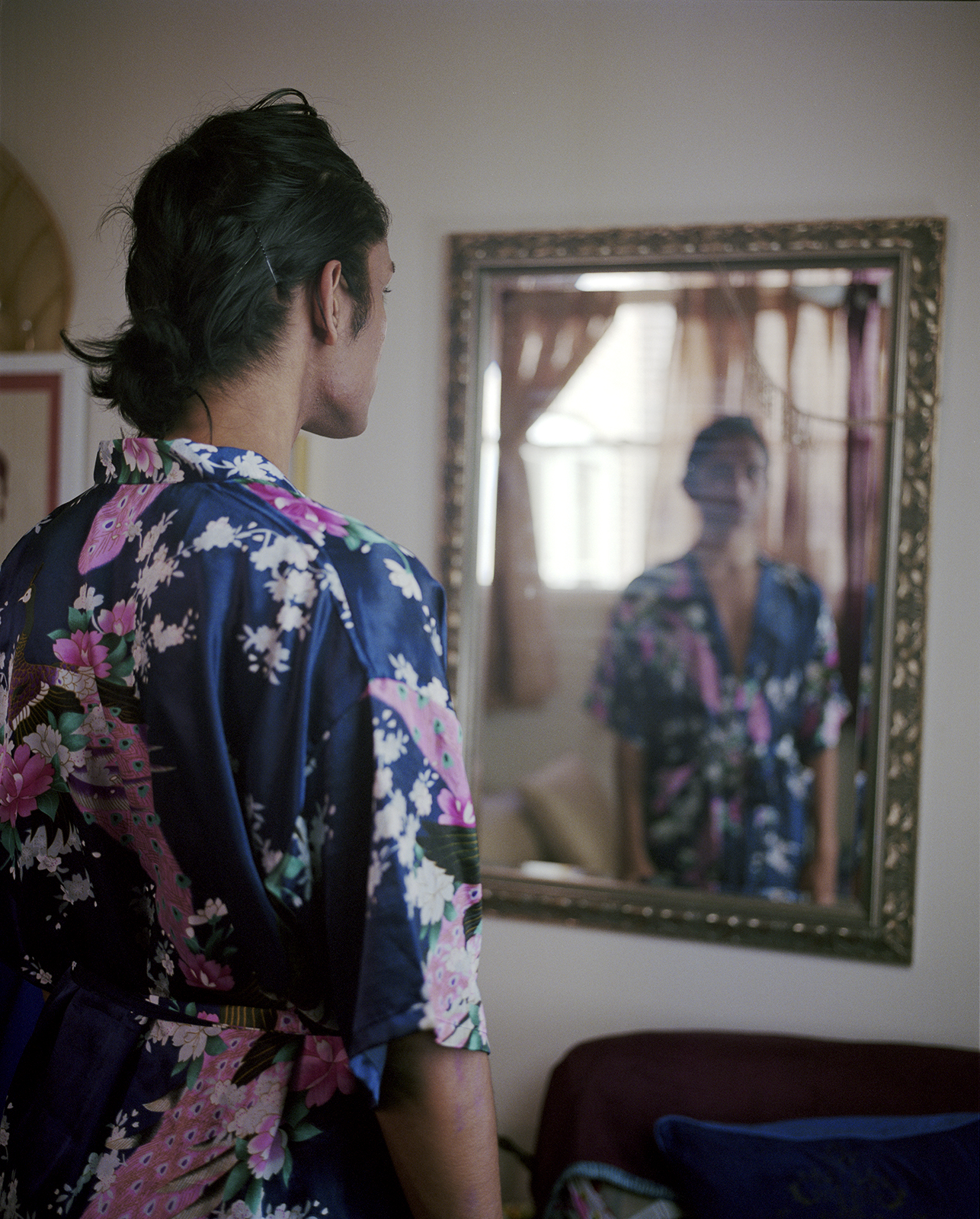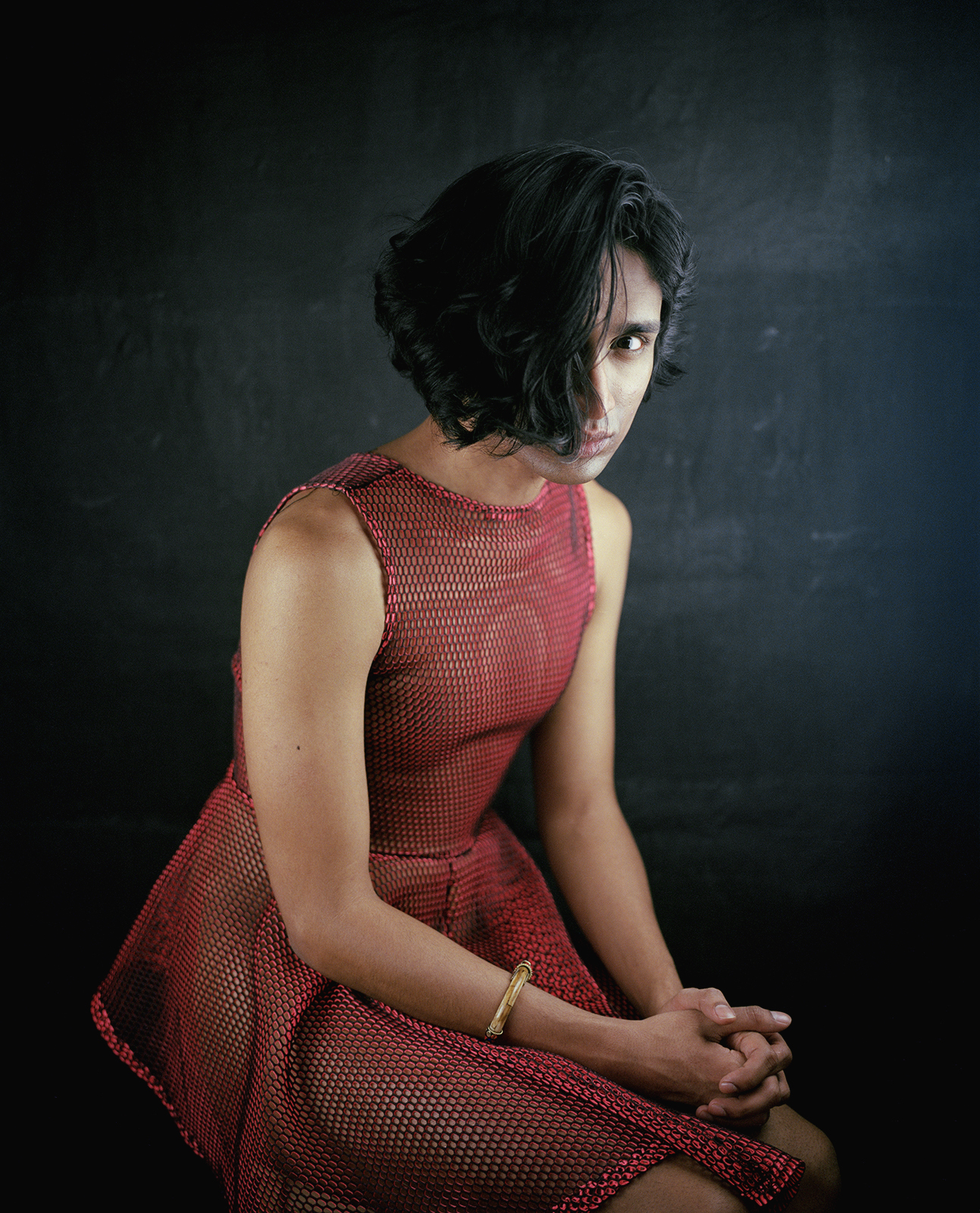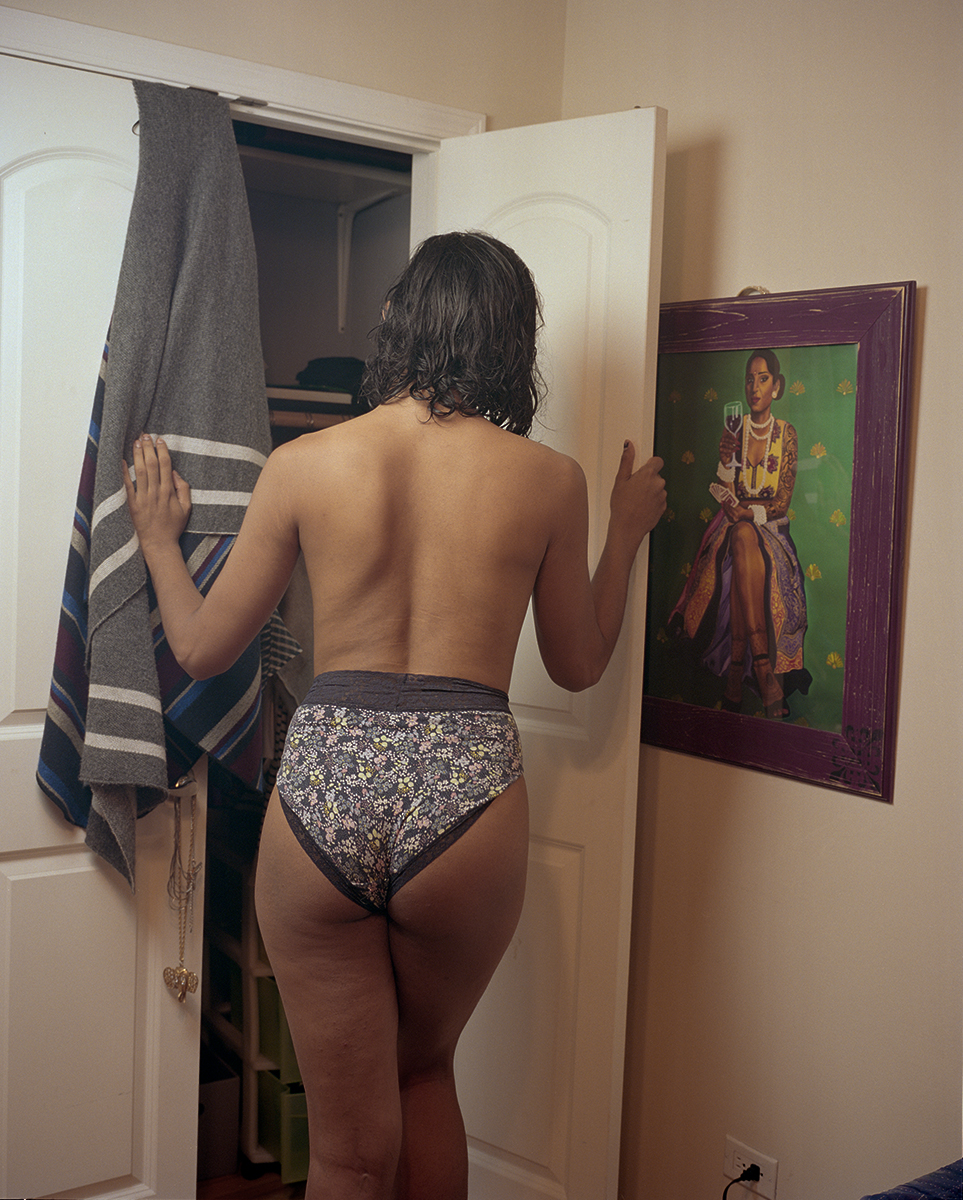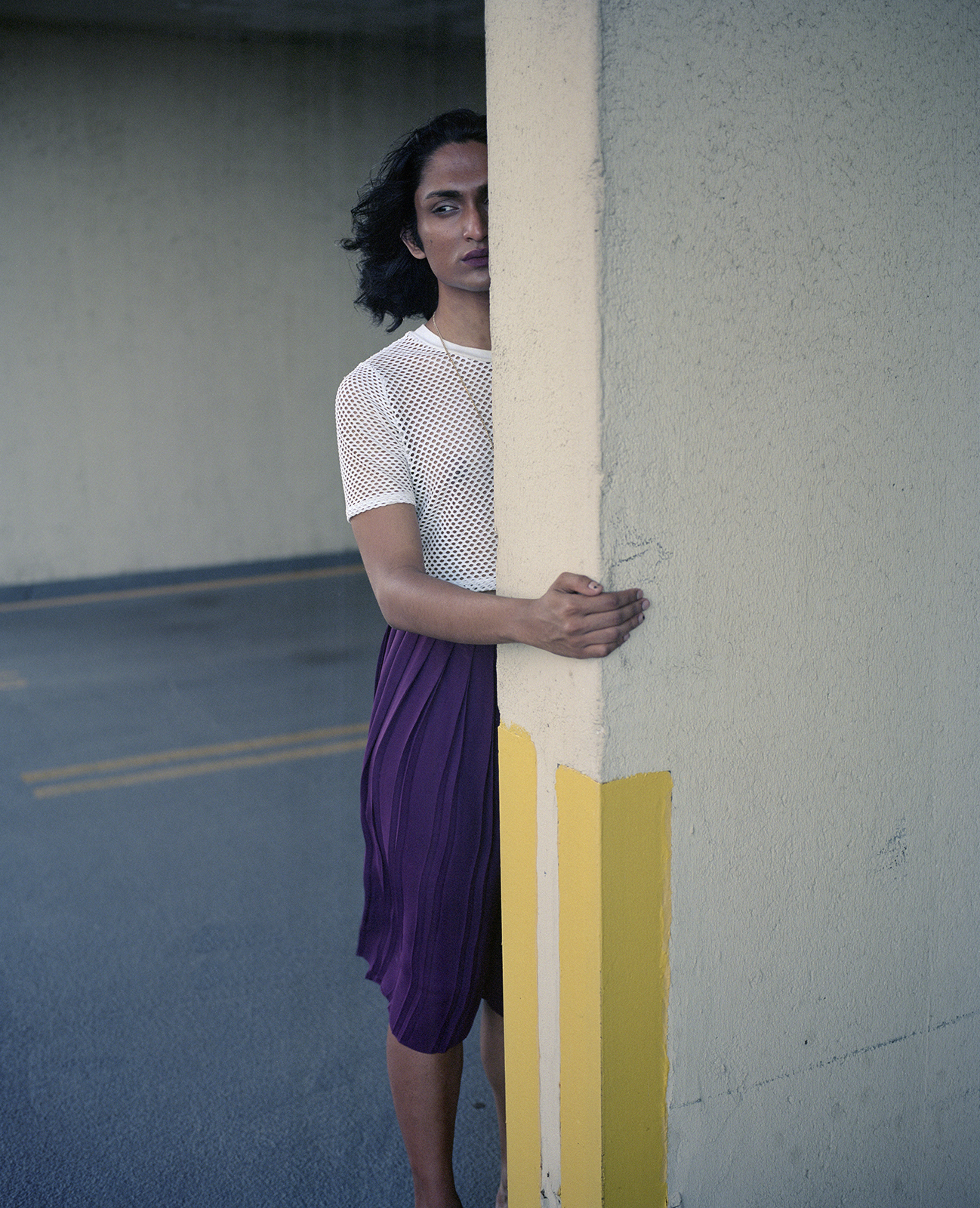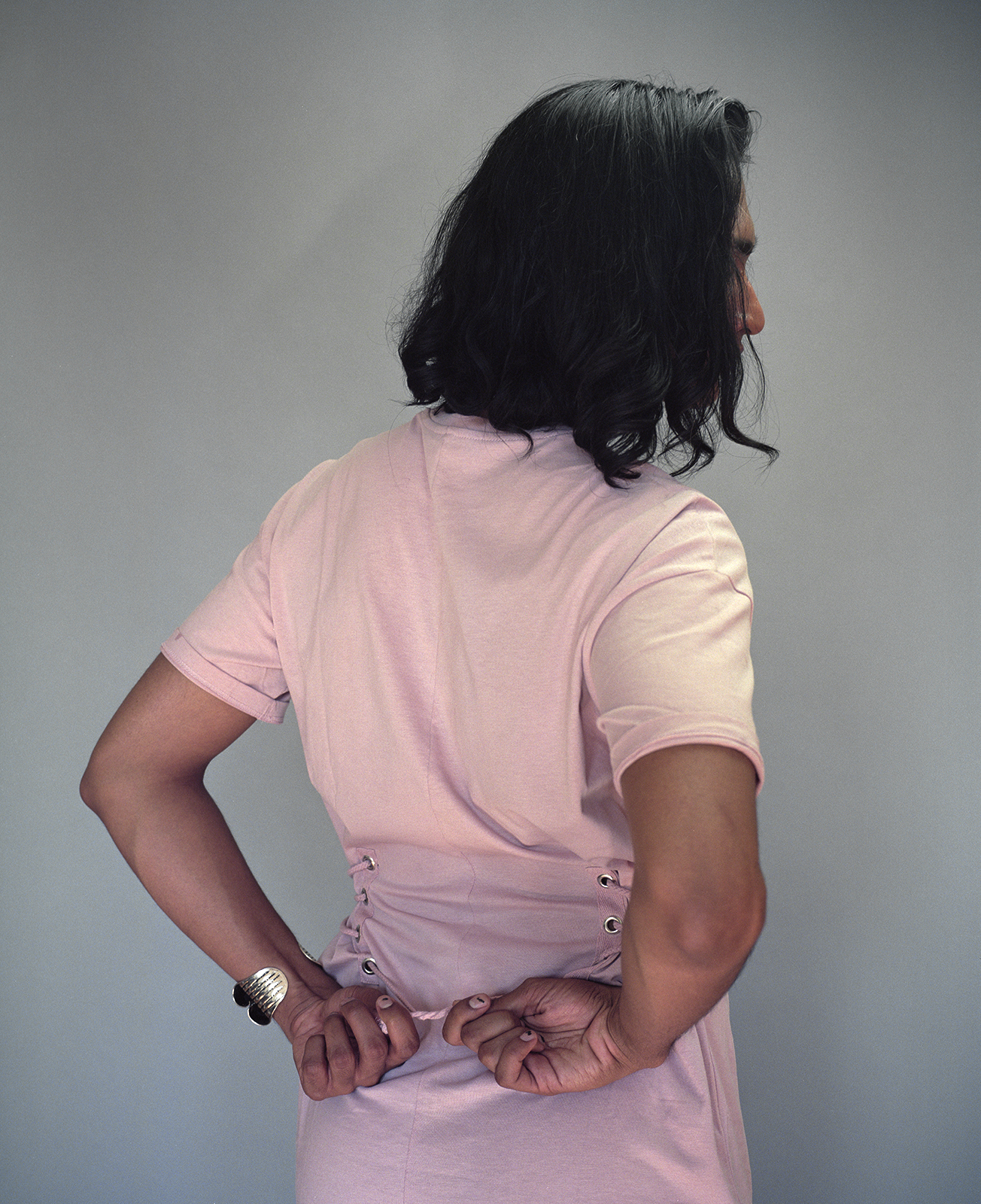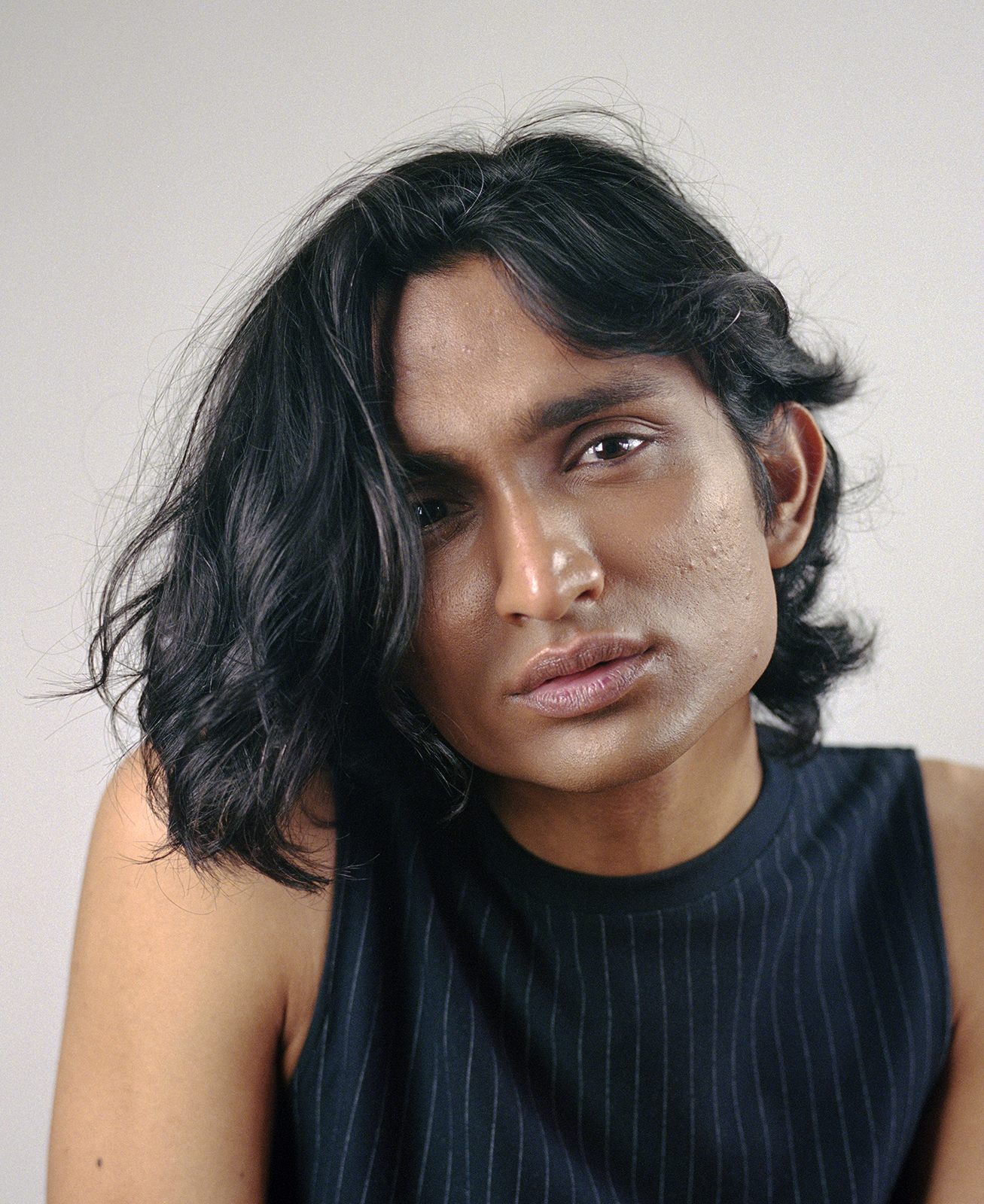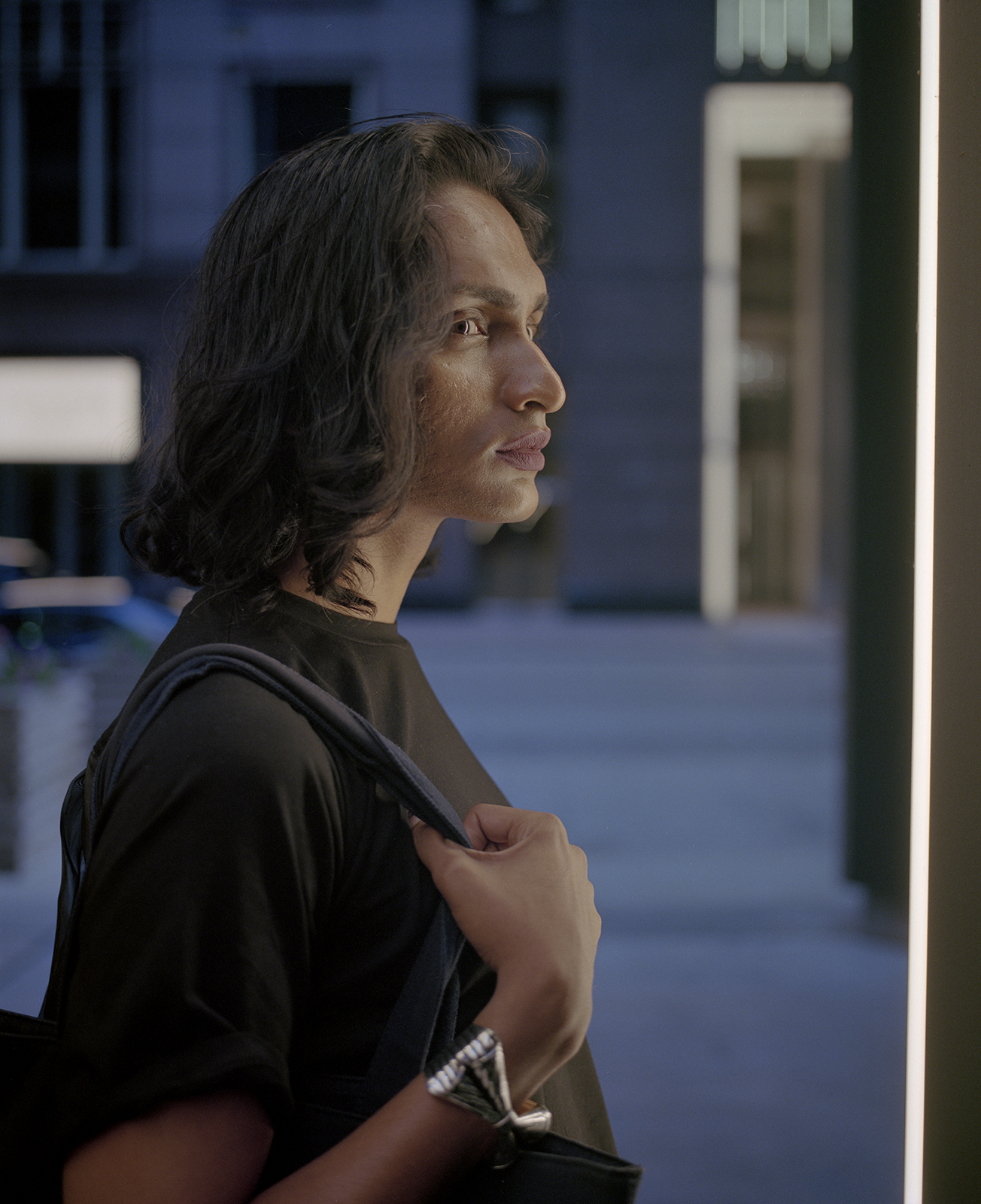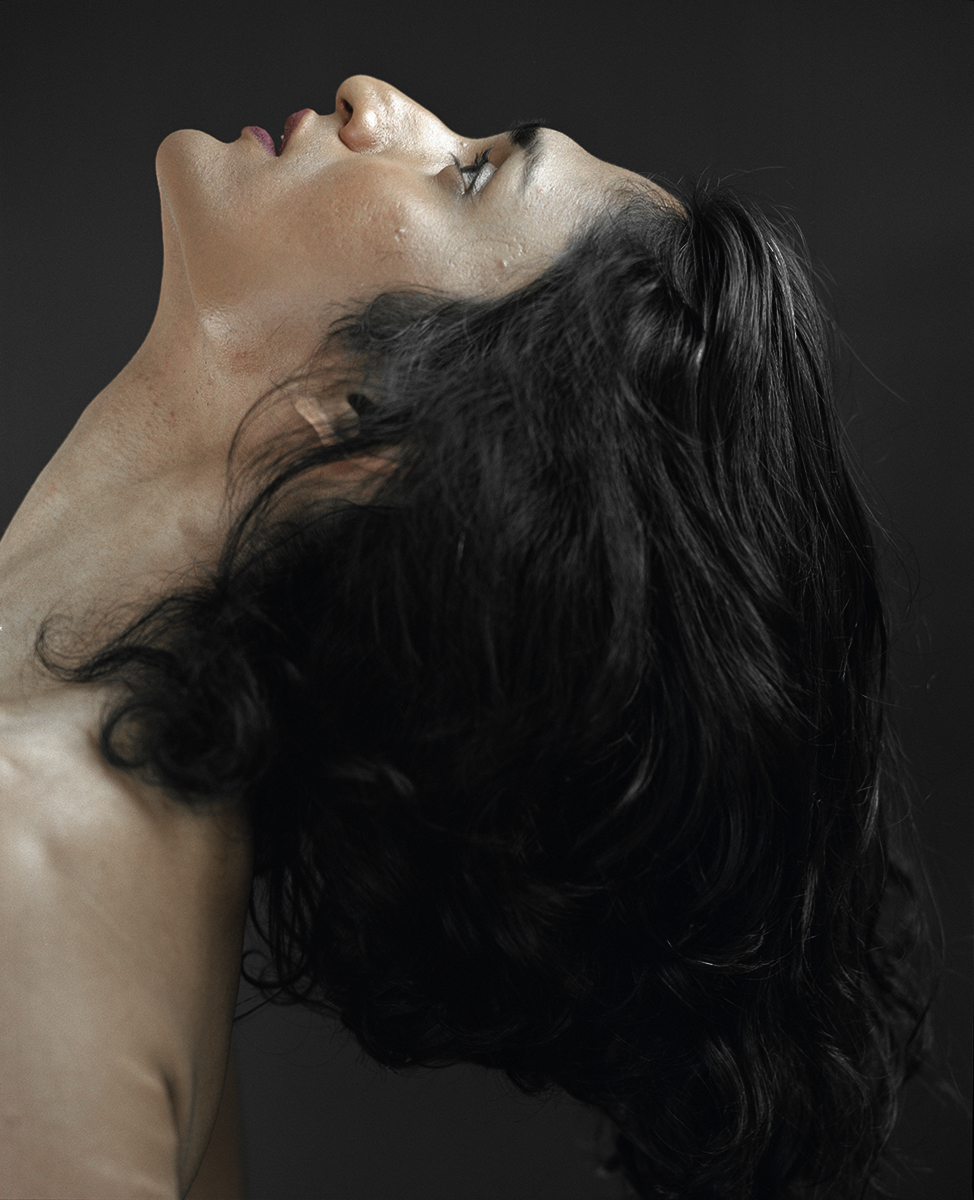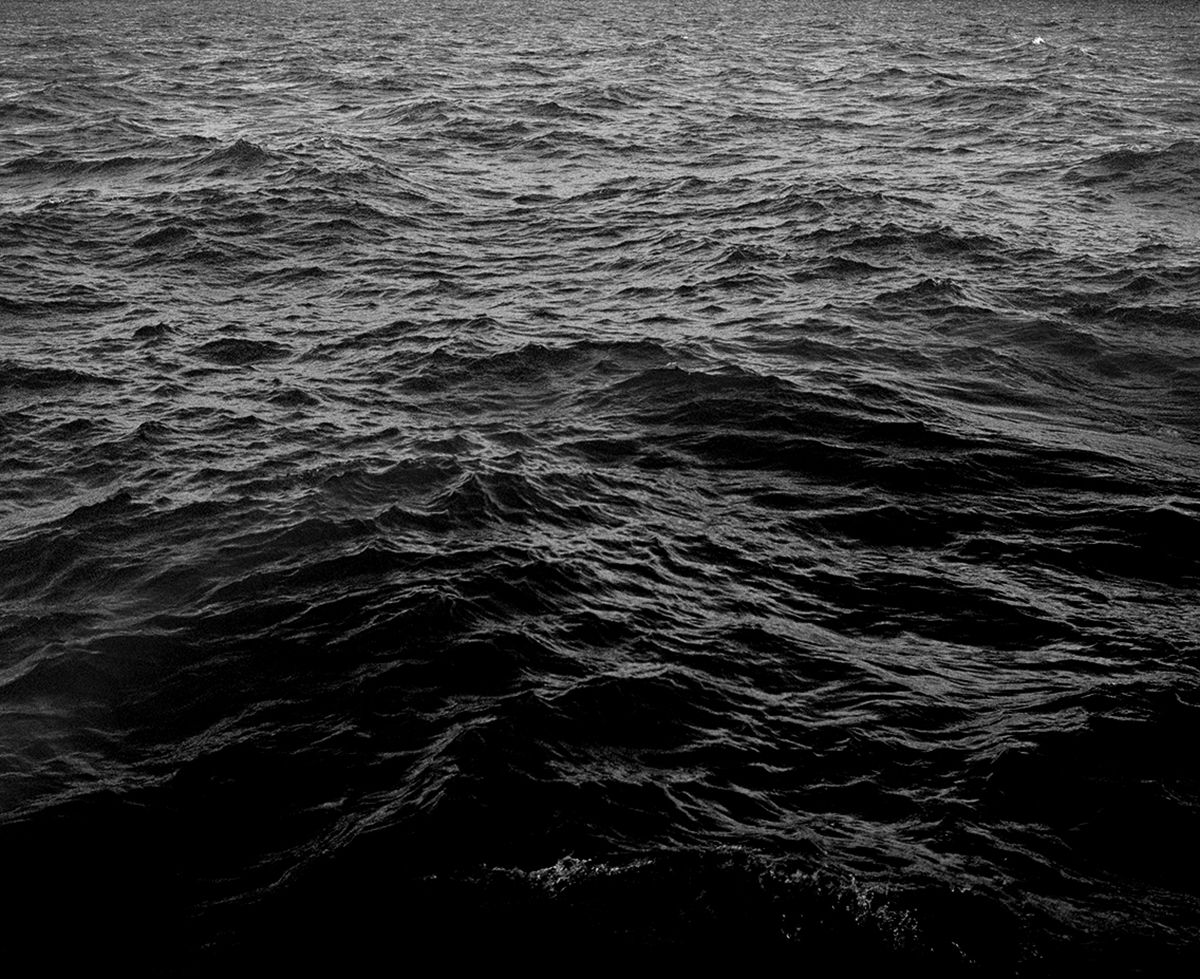Q&A: Shawn Rowe
By Jess T. Dugan | December 7, 2017
Shawn Rowe (b. 1985) is a Chicago based photographer exploring the complexities of gender and social constructs through portraiture. His long form approach allows him to embed with his subjects for months or years in order to understand them as complex beings. Shawn’s work has been exhibited and featured throughout the United States. Shawn also works as a curatorial assistant at the Museum of Contemporary Photography where he oversees portfolio reviews and curatorial projects. He is a 2018 Masters of Fine Arts in Photography candidate at Columbia College Chicago and received a BA in Psychology from Southern New Hampshire University.
Jess T. Dugan: Hello Shawn! Thanks so much for taking the time to speak with me. Let’s start at the beginning. What led you to art-making and how did you settle on photography as your preferred medium?
Shawn Rowe: Photography has been a part of my life for a long time but I didn’t really start taking it seriously until around 2013, which is also when I moved to Chicago. Moving there inspired me to explore new creative sides of myself and to immerse into the Chicago art scene. I’ve used photography as a way to express my point of view and desires where words fail me. I think like a lot of photographers, I’m a “capitol-I” introvert and being able to disappear behind a camera and observe what’s going on is something I really enjoy.
My path to art making has been winding. I have a bachelor's degree in psychology and originally used photography as a creative outlet. Having that background has given me visual language that I use to create portraits and still lifes that I don’t think I would have been able to create had I not studied psychology. I have also been able to use that knowledge with my subjects which lends itself to creating extended portraits and my desire to learn about them.
From Sal
JTD: I’m particularly interested in your series Sal, which focuses on the same person over a period of time, exploring complexities of gender and identity. How did this project begin? What is your relationship to Sal? What are you hoping to communicate by creating this extended portrait?
SR: I first met Sal online. We live in the same neighborhood in Chicago and began a friendship that has grown over the past three years. I started photographing them about a year and half ago and decided to specifically focus on them at the beginning of 2017. I had first photographed them as part of a larger series where I was photographing individuals who identified outside gender binaries. I found that this approach didn’t work for me and thought I could say a lot more by just focusing on one person. Sal identifies as a trans, gender-queer femme individual with no specific gender destination. I hope that I can communicate not only the complexities that one person can inhabit but also call into question the whole idea of what gender binaries mean and how identities can operate outside them. Also communicating what it’s like to truly be in one’s body and what it means to inhabit that body.
From Sal
JTD: Throughout the series, there is only one photograph where another person is present. What is your reasoning for this, and do you anticipate adding additional people into the work as it progresses?
SR: I’ve been thinking about this a lot. I’ve struggled with how to bring in others because I want their presence to be meaningful and intentional. The series is centered around Sal and I would like to keep them them the main focus. The conceptual grounding for the work is our ideas around gender binaries. Therefore by just focusing on them I can show the dimensionality that one person can possess. I can also talk about the issues and violence that are constant issues that the queer community and specifically Sal encounter. The only image with another person is Sal’s partner but, unfortunately he’s getting his law degree in Washington D.C. and is not in town often. He is a character that I would like to work with more but it will depend on our schedules aligning. As the project progresses, more people will appear in the images.
From Sal
JTD: You often photograph the same person repeatedly over time, which you describe as “embedding with your subjects for months or years in order to understand them as complex beings.” How do you feel that your long-term approach affects your work? Does your relationship with your subject change significantly over time?
SR: It definitely does. I’ve had to learn that asking for a reshoot isn’t a mark of a bad shoot, it’s just a desire to flesh it out further. For the Sal series that’s how it started and I quickly discovered that there were many thematic facets to explore. I was lucky that Sal was also interested in diving deeper and shared my love for the medium of photography. Although, photography by design is a medium of exclusion and can never fully encompass anyone’s true identity. By focusing on Sal, I hope to create as complete a picture as possible. And by working with them over and over again our relationship has grown to a point where we can both trust each other and are extremely comfortable around one another.
From Sal
I’ve used this technique - embedding with a subject - in other series as well. I’m currently working on a self-portrait project, using a stand in for myself. This project (V) is still in its early stages but I also see that project encompassing months and years as well. I tend not to have the impulse to jump from subject to subject when I’m making work that’s deeply personal, like the Sal series and V. It’s not something I want to rush, and being able to build relationships that can be mutually beneficial and collaborative is something I strive for.
From V
JTD: More than ever before, there is an explosion of imagery- both in the fine art world and in the larger culture- of a broad range of LGBTQ individuals with diverse and complex identities. Yet, simultaneously, we are in the midst of a deeply disturbing social and political climate throughout the United States. How do you situate your work within these two truths? Do you feel that the current social and political climate has affected your work in any way?
SR: There’s no way that the current political environment doesn’t seep into the work; it’s unavoidable. The rhetoric coming out of the current administration is concerning and their posturing towards the LGBT community is unacceptable. The intensity of the attacks affects me on a personal level and I know it also affects my subjects. I’m lucky to live in Chicago, which has a really inclusive and supportive queer community and I’m optimistic that the progress made in the last few years will hold.
From V
I’ve been thinking a lot about how the influx of queer imagery is changing the political discourse and if it’s helping or just being seen by the communities that already support them. Queer and specifically trans visibility are still underrepresented and often incorrectly represented, often resulting in cliches. Sal’s identity as trans and a gender-queer femme with no specific gender destination is also misunderstood. People love boxes and when someone like Sal doesn’t fit into any of them it can create tension. I try to subtly use that tension to make images that address issues of diversity and fluidity to create a discussion around oppression.
JTD: I love this quote by Sal, which you include in your statement for the series: I am not circumscribed by the eyes of others, because I have seen myself and know I am still here. And I live between my own lines, scrawled around and over the signifiers of identity, illegible to casual readers but silly, sacred, nonsense-verse elegy to myself.”
This idea calls to mind how essential it is for those of us in the LGBTQ community to define our identities for ourselves and to make space for our authentic selves amidst a repressive and often reductive, society. Is this something you are thinking of consciously with this series, and if so, how do you translate this idea into photographs?
SR: This is something I’m constantly thinking about. It’s important that I properly represent my subjects and honor their agency. Sal and I also talk a lot about how they are being represented in the photographs, what’s working and what needs to be changed. I’m very aware that I’m projecting onto Sal and the images I make are how I see them. I’m also bringing my own baggage to any pictures I make. Authenticity is really hard to get right in photography. I think that’s one reason I decided to do a series which focuses on one person over a period of time. I knew I couldn’t get at who Sal is in a single image. That’s also why I asked Sal to write something inspired by the work we were doing and why I included a portion of it in my statement.
From Sal
JTD: How long do you intend to work on this series and when do you imagine it will be complete?
SR: That’s a great question. I don’t see the Sal series ending anytime soon and could see it going on for years. We are interested in seeing how the work progresses and also how Sal’s identity and presentation changes over time. As long as we are both interested I think it will continue. I see it eventually being broken into chapters as a way of making edits and making it easier to absorb. Like I said before, the Sal series will continue to progress and my other self-portrait project will continue to evolve over time. I see all of my work as a long game and I have trouble deciding when something is finished because there are usually opportunities to improve the work.
JTD: What’s on the horizon for you as an artist?
SR: I’m in my last year of grad school at Columbia College Chicago, so that’s what’s consuming me until May. I’m planning my thesis exhibition as well as writing my written thesis so it’s hard to see too far past that. I also work at the Museum of Contemporary Photography where I’m a curatorial assistant. There I’ve co-curated the re:collection exhibition and assisted on the current show Disruptive Perspectives (running through Dec 22). I’m also working on making the Sal series into a book which I hope to have done by May. From there, the Sal series will continue which will add new dimensions as both Sal and I evolve.






